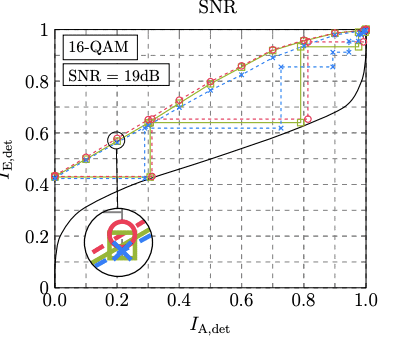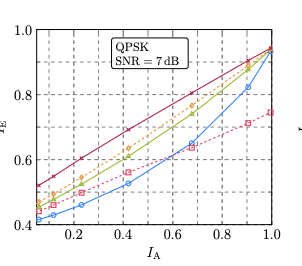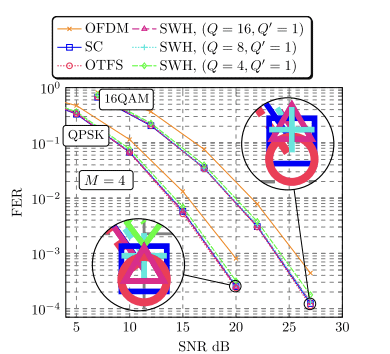Waveform Design for Highly Selective Channels

NYU Wireless P.I.s
Research Overview
In light of recent advancements in wireless networks to meet new demands, the exploration of innovative transmission methods for enhancing link-level performance is crucial. To tackle the challenges posed by wireless channel dispersion, a common approach involves spreading data symbols’ energy across time and frequency domains. However, this approach does come with a downside, as it reduces the independence of data symbols, requiring more advanced receivers to handle the increased interference.
In this context, our focus lies in designing waveforms (precoders) with iterative equalization and assessing their performance and complexity trade-offs. Specifically, our research has centered on employing the sparse Walsh-Hadamard (SWH) precoder alongside MAP and MMSE iterative receivers. SWH precoding stands out for its simplicity, as it avoids the need for complex mathematical operations found in DFT, making it more suitable for hardware implementation. Moreover, recent findings indicate that SWH facilitates MAP detection of data symbols, offering improved performance and complexity trade-offs compared to its DFT counterparts when used with state-of-the-art receivers under highly frequency-selective channels.
For future work, the new directions in waveform design involve addressing integrated sensing and communication (ISAC) constraints, as well as exploring frame design considerations.
follow this research
*stay current with research in this area by completing this form

 2025 Brooklyn 6G Summit — November 5-7
2025 Brooklyn 6G Summit — November 5-7 Sundeep Rangan & Team Receive NTIA Award
Sundeep Rangan & Team Receive NTIA Award 2025 Open House
2025 Open House











